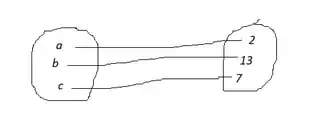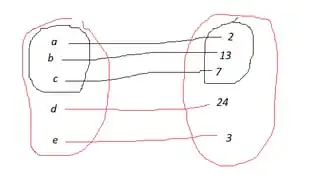Extension of function domains
Functions are fundamentally relations between sets. In particular, they map values from a domain (e.g., the set $\{a,b,c\}$) to a range (e.g., $\{2,13,7\}$).

But for anything outside the domain, the function effectively has free reign. It is not necessarily 'undefined' due to an inconsistency of the type incurred by division by zero. It may literally just be not yet defined there. So it's perfectly acceptable to redefine the function with an extended domain and define the values the function would take there.

But then we can use this new, extended function wherever we would have used the old function. And since there's effectively no drawbacks, we may as well take a 'natural' extended function as the general definition. This is the case for exponentiation and factorials, which gives us widely agreed upon values for otherwise nonsensical expressions like $2^\pi$ and $(1/2)!$ and values of $\sin$. There is also the benefit of convenience. Why would we want two different functions for each domain and specify which one we mean each time we use them?
The geometric, right-angled-triangle definition of $\sin\theta=\frac{O}{A}$ is useful but has a limited domain and lacks some features that we would want (e.g., negative values). Indeed, one could argue that there is no triangle with a zero-length side, so this definition would not apply to $\sin0$. But other definitions (e.g., with the unit-circle, power series, differential equation) do allow for $0$ as an argument. So out of convenience, it is generally agreed that $\sin0=0$. If anything, your point should have gone further since no triangle can have an angle greater than $180^\circ$, so the triangle definition would only apply for $0<\theta<180^\circ$.
By the same logic, the power series definition of $\sin$ is a natural way of extending the domain to larger sets with entirely new elements. For example, the complex numbers. An angle of $(1+i)$ is meaningless but since we have a natural and consistent way of defining $\sin$ with its power series, we agree that $\sin\left((1+i)\ \mathrm{radians}\right)$ is well defined and equal to $1.298+0.635i$. And so on to even larger sets, like the quaternions (Question 1030737: Exponentiation of quaternions). We can carry on with these extensions ad infinitem, as long as we are consistent.
What is an angle of zero? - Degenerate cases
An angle between two line segments is often defined as the minimum rotation about a point needed to bring one into correspondence (i.e. on top of) the other (Mathworld), (Encyclopaedia Brittanica). But two coincident line segments that are already on top of each other and require no rotation. Therefore the angle between them should be zero. Likewise, if line segments are allowed to be zero-length, two coincident line segments form a degenerate triangle, in the same sense that a point is a degenerate circle. So then an angle of zero corresponds with a line segment of zero and $\sin0=0$ should arguably hold for the triangle definition too.

